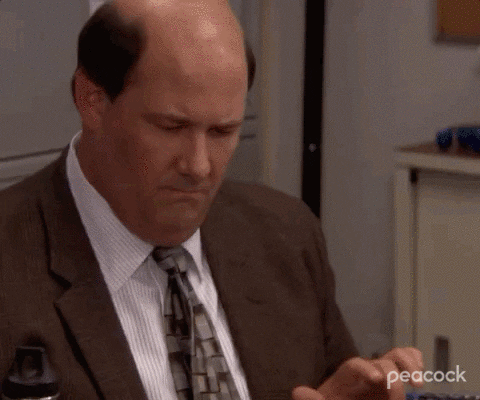
Valence
A portal to manage everything about your personal finances
Simplifying the way of Financing
Timeline
Winter'21 - Summer'22
Project Context
-
Software Engineering Project
-
Team: Aarush Kansal, Swetangi Rastogi, Vedant Singh, Ritika Kapoor
Tools
Figma, Fig Jam, Photoshop, Notion, Word
Dev : Flutter, Firebase.
Type of Work
User Research: Competitive Analysis, User interviews, Persona Mapping, Journey Mapping, Empathy Mapping, Research Synthesis
UX Design: Sketches, wireframing, prototype and usability testing.
UX Engineering: Front-end interface development using Flutter
ABOUT VALENCE
What about this app?
Valence is a financial app that encourages healthy financial habits, growing and learning as you save.
A finance management application that was designed, researched, developed and redesigned in correspondence with a Software Engineering course.
THE CHALLENGE
How can we devise a solution to better manage our funds and establish sound financial habits with constant analysis and study?
THE SOLUTION
A mobile application to efficiently approach concepts and habits of managing, monitoring, and analyzing financial behavior that is consistent with the user's lifestyle.
This Case Study thoroughly documents the research, analysis, ideation, and design process of the solution. It highlights the process used to solve the user problem strategically, the design decisions made, an analysis of the knowledge and research, sketching of the idea and development of the prototype based on multiple iterations and user testing results.
Simply, it answers the questions that motivate each process and action, that eventually led to Valence.
PROJECT BACKGROUND

We wanted to address
our daily lives where managing and monitoring personal finances remain a key hassle. It would be nice if there were a magic trick that made it unnecessary for us to worry about our finances..
By creating
a solution to determine an efficient way to move forward in managing, monitoring, and analysing financial behaviour that will be seamless with the user's lifestyle.
It all started with…
the new wave of the Corona virus that first swept through India. To get back home from university, I found myself short of money. I received my allowances quite recently and considered myself to be decent at managing them. But there I was, in the middle of the street, scanning through my recent transactions, breaking down the spending and tracking the money I lent and saved.
This led me to rethink,
my concept of personal finance, and how wrong I was at it. Asking around during conversations with my friends, I realized, it was a problem almost all of us faced.
So, after the colleges reopened this year and there was a pitch for the software engineering project, the five of us knew exactly what to work upon – a personal finance management system.
This project was developed, designed and researched with Swetangi, Aarush, Vedant and Ritika; me taking up the tasks related to the design of the product, while the team focused on the development.

About what led to building this project
PROCESS
How we structured and approached this project.
1
Exploration
We explored ways to better understand personal finances, what were the user behaviours, habits, needs and requirements, dissecting each step and extensively studying it.
4
Creation
I let my creativity run wild to bring life to the ideas, and design a solution that best helps solve the key issues of the problem
2
Ideation
I began with processing the research findings, better defining objectives, and focus on the key problems, concepts to learn and the strategies to solve them.
5
and, Validation
We finally, tested our concept and product prototype to understand and validate our solution, checking the boxes and learning with every validation.
3
Conception
I brainstormed and explored multiple methods to find creative ways to represent the solution, collaborated with some potential users and tested a concept for the product
As the problem involves understanding multiple key concepts relating to personal finance, and a better understanding of the user problem, behaviour and requirements. We decided on a more iterative approach to design thinking - to extensively conduct research before development, with a focus on user behaviours, habits and how to fully cultivate the solution into the daily habits of the user.
EXPLORATION
How scenic is the financial space rn?
For understanding the concepts related to finance, user behaviours to personal finance and the current progress made to craft a suitable solution, it was important to extensively structure the research process, and understand what the space looked like, demanded and expected.
I started by learning
About personal finance.
Personal Finance covers the core concepts relating to managing one’s money, savings and investments. It involves working across these key objectives to realize personal financial goals.
-
Managing Income and cash flow
Having a thorough and detailed system by which one can track and understand their income and expenses allows them to understand where the major sections of their spending tendencies are, hidden spending and ultimately gain insight into their savings.
-
Managing Financial growth
Having saving baskets, to invest, insure and save for a variety of occasions, and readily be available in an event of an emergency. This can be through market investments, insurance and other saving practices. This allows for managing savings, to better achieve financial goals and also have an amount for uncertain events and emergencies.

Bringing in the Apps & Users into the mix.
Analysis of the Apps
Extending from the concept, it is important to understand the current space around finance management applications and the different experiences and solutions available to the user.
For this research, I’ve conducted a heuristic evaluation, followed by a SWOT analysis of some known financial tools available in the market.

Finding from the users
To conduct the user research, both qualitative and quantitative approach was followed, with references and information from multiple online sources, forums and articles.
The quantitative approach was piloted in the form of an online survey, additionally, secondary research to understand concepts about user behaviours and financial practices was done.
The purpose of this method was to gain measurable data that described users’ behaviour, needs, pain points and pattern which helps understand their personal finance management practices. Extending to the insights gained, user interviews were conducted for further insight into the knowledge.
About the research behind Valence
IDEATION
Before putting the finishing touches on the research insights and moving on with concepts and knowledge, I needed to have some fundamental questions and the answers to those questions in order to determine the project's objectives.
What do we need to address?
Based on the insights from the survey and interview, we could highlight
-
A system that encourages and motivates financial habits.
-
An in-depth analysis of wealth and transactions.
-
A space to explore and learn about finance.
Let's pin the notes
Here’s what my exploration of personal finance taught me
A personal finance system would generally require some core functionalities to fulfil the management practices and would provide analysis and information about their habits and behaviours
.
-
The system must provide a window to monitor the income and expenses of the user to understand their spending tendencies and saving habits
-
It should provide a view of the user’s goals and progress of it.
-
Investments, cash flow, transactions and credit information should be available to the user.
What do we know about the user?
-
Most didn’t follow financial habits due to a lack of motivation to manage.
-
There was a concept of spending less meaning saving more.
-
The working professionals needed an in-depth analysis of their wealth and transactions. While the students were most interested in understanding what are they spending.
-
The current experience around savings and managing wasn’t positive and most respondents found it tedious.
-
Users new to managing finances had no financial literacy or understood the concepts relating to personal finances. But most were willing to learn and explore it.
The many personas
Based on the survey and interview, I found that the requirements of users were diverse, with variations in user behaviour and needs in different user segments.
User persona would help me, create a better understanding of the end user, and acknowledge their requirements.
So, what should Valence be?
After establishing the persona, I moved into translating the synthesis and developing a preliminary solution for each of the requirements. Noting down some key objectives and functionalities the application must provide and be.
CONCEPTION

We have the ingredients, what's next?
In this phase, the approach was to synthesize the research, understand the user needs, pain points, and behaviour, integrate personal finance knowledge into the experience and structure a comprehensive solution that contains all features to fulfil the objectives of the solution
So, here’s how I started
What did the Competition tell me?
To ideate on the solutions, I proceeded with referring to the insights from the heuristic analysis of the applications and understanding what concept of personal finance management each of the applications aims to tackle and solve.
How do I build features that matter?
I proceeded to list out the features we could provide in our solutions and understand which problem each of them helped me solve. To furhter understand their impact on the personas, I also proceeded with a feature prioritization matrix study, which helped me to focus better on the key features and also understand which feature needed more priority.
How do I structure everything?
After understanding the features and their priority, I proceeded with building out the Information Architecture and User Flow of the application. It was also important to visualize and understand the flow the users will be taking to access each feature in the application
The User Flow
CREATION
Building the concept for the solution
After understanding the features, the flow of the components in the product and the outlook of the application, it was now time to conceptualize the design aspect of it and build an interactive and immersive experience for the users.
In the heuristic evaluation of multiple applications available on the market, including finance solutions, I started to sketch out different screens to visualize the user flow and also successively build out designs and prototypes for the solution.
The approach with the design was to first understand what the users are experiencing – the nature of the design they are using and the components they are interacting with. At the same time, going through and exploring inspirations for the application design, the visual style and the aesthetic.
After these initial steps are done, I proceeded with picking up the best aspects of both and building a design concept that would justify the vision for the product.
I staged it as such,
STAGE 1 OF 5
Started with rough sketches to build an initial design concept✏️
I started with sketching out the wireframes of the user flow and the lookout of the application, asking and evaluating with the team, with each sketch. I proceeded with a basic concept that works, building a high-fidelity mockup of the design to test with some potential users.

Happy Accidents :)

The current solution Valence is a redesign of the initial project Fin.io, which we researched, designed and developed for the Software Engineering course.
After testing design concepts with the users, critically analyzing the designs and learning more about human behaviours and finance, I learnt about the shortcomings of the concept.
The initial concept for the application was designed without proper implementation of the research. It lacked features and objectives for curating a space to learn about finance, including investments, goals and savings for the user, and provided limited insights. More importantly, it was void of the mission to motivate users to build healthy saving habits and learn about finance with the process.
Synthesizing from the insights after user testing of the concept, I attempted to redesign the application, working and extensively understanding the points missed, and the ways to include the features.
The following sketches, design mockups and tests are of the initial design concept
STAGE 2 OF 5
Testing the design concept🧪
The initial concept of the design was tested with most of the research respondents in a contextual inquiry setting, to understand their use of the application, and interactions.
We also held a guerilla test on our campus, gathering insights and meaningful interactions from over 100 participants over three days. This helped us understand some key flaws in the concept, the additional features to introduce to the design and also applying retention concepts to the application.
-
High reliability on the impact of spending to motivate savings.
-
No gateway to track investments and loans. Additionally, gain insights about the same.
-
Lack of space for learning about finance, the news or tracking markets.
-
No insights about the user performance and impacts of user habits
-
Does not create motivation for adopting good financial habits.
-
Lacks the purpose to drive smart financial habits.
.
STAGE 3 OF 5
Solving problems, getting feedback and creating magic🪄
The insights gave a new perspective to the way I was focusing on the solution. Knowing the missing pieces, it was time for me to integrate the concepts of finance, and seek ideas on aligning them with human habits and behaviour of learning, saving and managing. Build, create and design✨

STAGE 4 OF 5
Re-learn and Re-build
The flow of work
The process of personal finance is dictated by three main sections –
Managing, Saving and Investing.
While the concept integrated some ideas of managing by providing analysis and transaction details, I think more of management can be introduced if we provide an ability to the users to understand their spending, saving tendencies and performance and also introduce investing into the mix.
Why do people save?
People aim to provide for themselves and live a life of stability, freedom and safety. Saving and investing their finances are important life activities and, as the mission of Valence – it is crucial to provide a solution that helps and assists in this process.
Baskets
The basket is a virtual wallet designed to integrate into the saving habits of the user. The mission of Baskets is to allow users to invest in their goals and financial aspirations. As a virtual wallet it provides a storage facility without the need to open another account and any stored amount is readily available for withdrawal.
Accountability and Rewards
The process of building a habit can be challenging. Any process in its initial phase is driven by aspirations and constant motivation, which gradually deteriorates as we move forward. Introducing rewards and accountability at this point can help motivate them to keep working and acknowledge efforts.
To integrate this knowledge, we developed a three-step approach – setting up goals, accomplishing goals to receive milestone points, completing milestone points to receive offers and discounts as rewards
Goal
Goals are personalized spending limit set to categories where users are typically spending. It helps to keep a track of the category’s users are spending on, the amount being spent and also earn milestone points with every goal achieved.
Milestone Points
Milestone Points are in-platform rewards that can be claimed for earning exciting rewards, discounts and offers from multiple brands and platforms.
Rewards & Offer
Rewards and Offers section provide a diverse range of rewards, discounts and offers that can be claimed from diverse brands and categories.
STAGE 5 OF 5
Bringing it all into components
From a production perspective, an application carries a sense of identity and aura around it. A good and well-designed design system that resonates with the expressions and message of the mission of the application, is crucial to building a sense of belonging and delivering the voice of the application.
It was important for me to put the best view of the application out there, and hence I decided to think carefully, openly and creatively as I approached building its design language and the components that would interact with the user.
VALIDATION
But, did I do it right?
We were nervous yet most excited about this phase. Validation from the users would not only be extremely insightful but also motivates us to brainstorm, relearn and ideate better.
From the users, for the users
The application has gone through two rounds of testing. For the first round in December 2021, we tested the design concept through context inquiry sessions with most of the research respondents and guerilla testing in our college campus.
In August 2022, I conducted 10-hour-long usability testing sessions on the application prototype with a diverse set of users ranging from new and experienced working professionals and university students of different years.
Testing the solution
The participants were provided with the designed application prototype and tested on their use of features – understanding if they integrate into their existing financial practices, onboarding experience, interaction with the learning modules, analysis and goals, and satisfaction with the overall experience.
So, what did they say?
A positive light
From post-test interviews with the participants, we could understand that most participants had a positive look towards the application because of its inclusivity of multiple financial concepts, which discards the need for having and accessing multiple applications.

Some resistance to new space
While most experienced users of financial applications found the app prototype right at home with the features, it was overwhelming for beginners and most of the participants skipped through the onboarding process for creating goals, and baskets.

Excited to learn
All the respondents showed genuine interest in the news section to understand the market, business and finance information curated within articles, videos, and news. It was the section where participants spent most interactions and time.

Analysing Analysis
There was a lot of interaction in the analysis section of the applications. Participations mentioned that the visualization and category-wise spending information would definitely help them make better decisions and also recommended the need for smart suggestions, to further help them achieve their goals.

How rewarding were the rewards?
The participants had a very positive acceptance of the rewards section and the inclusion of a system to motivate them to achieve their goals. The participants who skipped the process of creating buckets and goals in the onboarding process proceeded with creating and interacting with the features after discovering the reward feature.

SOLUTION
You have seen the journey,
let's meet
Valence
A look at how Valence helps users to achieve their financial goals with a journey of learning, exploring, saving and investing.

and its got a dedicated system too!




Simplifying the
way of financing

All things connected.

A space for everything personal.

Learning is powerful.

Analyze in depth.

and yes, we do have splits.

And so much more
See Valence in all its glory!
TAKEAWAYS
A new perspective.
In preparation for the project, I read countless articles and YouTube videos about UX case studies and conducting research.
During this course, I gained an overwhelming amount of knowledge about how to broaden my perspective on things and understand the various perspectives that play into building an experience. It wasn't until I started building the project that I truly understood and appreciated the challenges of product development. With this experience, I have gained a new perspective of seeing things from a variety of angles and understanding why, how, what, and where users think.

Beyond design.
To build a product and experience doesn’t mean just a glamorous UI, it is a constant convergence of functionality, esthetics and understanding of the user. There is a lot of structuring, brainstorming, understanding and rethinking about the actions, to provide the most optimal strategy to solve the problem. And the quest to find and form this solution makes the entire UX design process more exciting.

Prioritize priorities.
Defining clear priorities and structure to the process is very important. This helped me not only better contextualise my findings but also build a path for the next steps. To respect and complete each step of the process, it is key to focus on the priorities and build a structure that best adapts to my methodology.

Bird's eye view.
To design for people and not just users, it is important to strike a fitting balance between aesthetics and functionality. It is key to understand the user’s behaviour, habits, and actions. This calls for looking at things from a higher ground and truly understanding their actions and the intentions behind them. Questioning my decisions and roleplaying different users from their personas helped me understand the flow of using an application and how different users use an application differently.

Understanding the roots.
One of the most insightful lessons from this project was about breaking down tasks to find the core of the problems, knowledge to grasp the concept better and building strong foundations. Bringing this important practical knowledge from my engineering lessons to my problem-solving process made me understand the world of creating solutions and solving problems isn’t that different on its core.

FUTURE SCOPE
Although the usability testing and pilot study suggested our prototype to be usable and appreciative of the objectives of the project mission, there is still more scope for development and ideations to fully encompass the edge cases, build stronger interactions with machine learning and integrate smart systems that learn user habits and adjusts the application experience accordingly.
I’d definitely like to develop the solution into a working product and further test, evaluate and bring more concepts to production. Working on the suggestions from the respondents, there is also a space to integrate machine learning into the system to generate smarter analysis, personalized to the user behaviour which would make the application more intuitive and interactive with the users.
.png)
